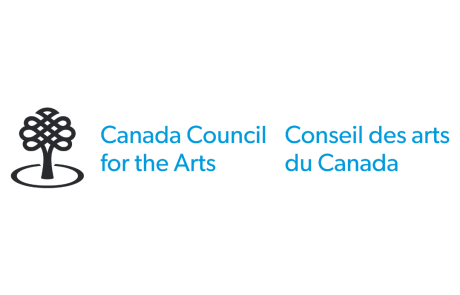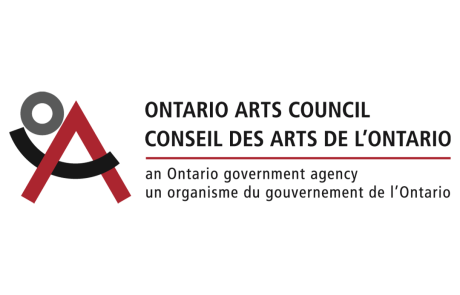Inuit Art. By the Book?
By Dr. Heather Igloliorte
In 1951, the Canadian Guild of Crafts, funded by the Department of Resources and Development and in co-operation with the Hudson’s Bay Company, published an instructional booklet entitled Sunuyuksuk: Eskimo Handicrafts. Written and illustrated by the guild’s arctic representative, James Houston, the booklet offered suggestions to Inuit on what to make and what materials to use in their handicrafts and carvings to make them appealing to a southern market. The Department of Resources and Development had an agreement with the Canadian Handicraft Guild to fund the Guild’s handicraft activities in the North. With the decline of the fur trade the Inuit, who had been recently settled into communities, were becoming largely dependent on the Canadian government for social assistance. Eager for the Inuit to regain self-sufficiency, the government supported the Guild’s arctic initiatives. In exchange for the carvings and crafts Houston purchased, the Inuit would receive store credit redeemable for goods such as rifles, tobacco and flour at Hudson’s Bay Company stores. The Guild’s instructional booklet was published in the early days of this fledgling industry. Intended to be the first of a series of illustrated guidebooks, Sunuyuksuk – which means things that can be made in Inuktitut – was created to stimulate the handicraft business. The 30-page booklet was illustrated with images of Inuit tools, toys, and carvings that Houston had seen or purchased on his initial visits North. In addition, it included drawings of non-Inuit items, such as cribbage boards, rifle cases, and ashtrays decorated in Inuit motifs and made from materials indigenous to the Arctic. Houston suggested these market-driven objects would be found “useful and acceptable to the white man.” As it turned out, those acculturated objects did not sell well to collectors of Inuit art, who desired “authentic” work uninfluenced by the outside world. Sunuyusuk: Eskimo Handicrafts was a success on some levels. RCMP officers, teachers, missionaries and Hudson’s Bay Company traders circulated Sunuyuksuk: Eskimo Handicrafts throughout the North, encouraging Inuit to try their hand at making the articles described in Houston’s text. This enthusiastic promotion was spurred on by the preliminary success of handicrafts initiatives: the distribution of relief funds had decreased in the communities that participated in the handicrafts industry, and RCMP officers reported an overall increase in the self-esteem of those Inuit who were given the opportunity to support themselves and their families. These were the positive effects of the industry that Houston was instrumental in establishing for the Inuit of the eastern Arctic. However, in spite of these initial good tidings, the pamphlet drew considerable criticism from the then Department of Resources and Development. One objection came from a government official who was offended by the illustration of a carving of an Inuk about to shoot a musk ox, a species that was protected under the Game Ordinance. Others objected to the didactic tone of the text. While Houston stated in the introduction that the suggestions were not meant to limit the Inuit, the explicitly instructional nature of the drawings and text contradicted this assertion, offending some with its didactic tone. Helga Goetz writes in The Development of Inuit Art (1986) that the booklet became an “embarrassment” to the department. The difficulty was this, Goetz explains: “How does one generate production of crafts in one culture for sale to another, foreign culture without giving instruction in some form or other?” Although well intended, the pamphlet’s heavy-handed approach ultimately backfired; Inuit craftspeople and carvers produced an abundance of work based on the booklet’s suggestions, resulting in numerous examples of very similar articles. In the end, the pamphlet was not “the first of a series,” as promised; it was withdrawn from circulation shortly after its publication and recalled in 1958. Ironically, the failure of Sunuyuksuk: Eskimo Handicrafts now appears to have had a constructive and beneficial impact on the development of contemporary Inuit art. Due to the poor reception of these non-Inuit objects, Houston changed direction and instead encouraged the Inuit to develop individual styles and to carefully finish works. His influence is embedded in the subjects and styles of what we see as contemporary Inuit art today. While not all of the objects in this exhibition continue to be produced, even the most unusual pieces have recognizable features that respond to our idea of Inuit art, past and present.
 Dr. Heather Igloliorte, an Inuk-Newfoundlander and Nunatsiavut beneficiary, is the Canada Excellence Research Chair in Decolonial and Transformational Indigenous Art Practices at the University of Victoria, BC, where she is a Professor in the Visual Arts Department (2023). Heather formerly held a Tier 1 University Research Chair in Circumpolar Indigenous Arts at Concordia University in Montreal, QC, where she was an Associate Professor in the Department of Art History and co-director of the Indigenous Futures Research Centre with Prof. Jason Edward Lewis. Since 2018 Heather has directed the nation-wide Inuit Futures in Arts Leadership: The Pilimmaksarniq / Pijariuqsarniq Project (2018-2025), a Social Sciences and Humanities Research Council (SSHRC)-funded partnership grant which supports Inuit postsecondary students to explore professional career paths in all aspects of the arts, including collections management, curatorial practice, arts administration and other areas of the visual and performing arts, in order to address the longstanding absence of Inuit in agential positions within Canadian art history and museum practice.
Dr. Heather Igloliorte, an Inuk-Newfoundlander and Nunatsiavut beneficiary, is the Canada Excellence Research Chair in Decolonial and Transformational Indigenous Art Practices at the University of Victoria, BC, where she is a Professor in the Visual Arts Department (2023). Heather formerly held a Tier 1 University Research Chair in Circumpolar Indigenous Arts at Concordia University in Montreal, QC, where she was an Associate Professor in the Department of Art History and co-director of the Indigenous Futures Research Centre with Prof. Jason Edward Lewis. Since 2018 Heather has directed the nation-wide Inuit Futures in Arts Leadership: The Pilimmaksarniq / Pijariuqsarniq Project (2018-2025), a Social Sciences and Humanities Research Council (SSHRC)-funded partnership grant which supports Inuit postsecondary students to explore professional career paths in all aspects of the arts, including collections management, curatorial practice, arts administration and other areas of the visual and performing arts, in order to address the longstanding absence of Inuit in agential positions within Canadian art history and museum practice.










